I have to go to work and play with my baby every day. I wish I could have multiple places at once to help me!
My baby pestered me to play with her every day. I was so tired that she didn’t enjoy herself.
The matter of playing with mothers is simply worrying. No matter whether we have time and energy or not, Eva will never stop beating chicken blood.
In fact, it is a good way to take the baby down to the kitchen. While accompanying her, she also finished the housework incidentally, killing two birds with one stone.
In kindergartens and families in Europe and the United States, it is becoming more and more popular for babies to have cooking activities and participate in the production of three meals.
Is it really good to let children participate in food production?
Cooking Education Develop Children’s Abilities in Many Aspects
1. Social emotional ability
In kindergartens in Europe and America, cooking activities always attract everyone in the class.
When making food, children are always very focused.
In order to make delicious food, children are willing to listen carefully and observe the simple cooking steps, follow a certain cooking sequence, and are also willing to communicate with friends, cooperate with each other, and take turns to add the required ingredients.
2. Muscle Strength, Problem Solving Ability
Beating eggs, squeezing lemon juice, stirring salad, smearing jam, kneading dough and other steps can not only exercise the fine movements of children’s fingers, but also promote the development of hand-eye coordination ability, which is also the basis for children to write with a pen in the future.
Sometimes, although children know how to insert toys more stably, they cannot realize their own ideas due to insufficient strength of their fingers and wrists. These simple cooking activities can also enhance children’s muscle strength and enable children to finish better when playing with toys or doing manual work.
When children complete these activities independently, their ability to solve problems independently is also improved.

3. Language and cognitive abilities
Many European and American kindergartens will regard cooking activities as the main form of teaching scientific knowledge.
The teacher gave the children the opportunity to predict what after each step (stirring or adding water, etc.), and encouraged them to observe the changes of various materials after mixing, temperature rise or external force.
In the hot production process, children will have many opportunities to count, classify, use various containers for measuring volume, etc., and their vocabulary will gradually increase with the interaction with adults.
Step 4: Inspire an interest in food
The cooking process is the best time to learn healthy eating!
Children can’t help trying each added material, such as flour, vegetables, oil, vinegar, etc., because of curiosity, to feel the unique flavor of each ingredient.
For picky children, it is a very good way to increase dietary diversity to let them use a variety of fruits and vegetables to participate in cooking. Even if I didn’t want to eat something, I would like to hold a show if I made it myself.
5. Creativity
Cooking is not only a science, but also an artistic creation.
In the cheerful production process, children are allowed to try it out. It is extremely interesting to let children choose one of the fruits or vegetables in the refrigerator to add and taste their own creations.
If the family is satisfied with the child’s creativity, they may as well name this dish after the child, such as [Xiao Bao Shi Vegetable], to encourage the child to participate more.
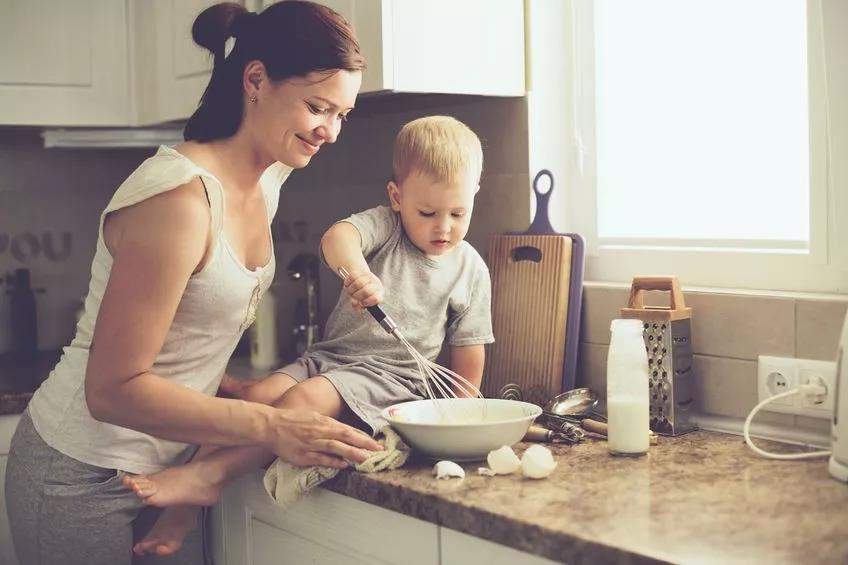
How to make three meals with your children at home?
In this way, taking the baby down to the kitchen has many benefits.
However, before entering the kitchen, we still need to be fully prepared. The most important thing that cannot be ignored is the safety of children.
Before the child enters the kitchen, we should put away unnecessary cookware and knives so as not to scrape and fall in a hurry and hurt the child.
In addition, try to keep the child away from the fire source and power supply. If it is inevitable in the production process, parents can replace the steps of ignition and power plug-in.
Let’s talk about the steps that children of different ages can participate in.
The suggested age given is for reference only. The specific steps that the child can participate in need to be determined according to his existing abilities and past experience.
2-3 years old
Two or three years old is the age when children learn to use big arm strength. You can try the following interactions:
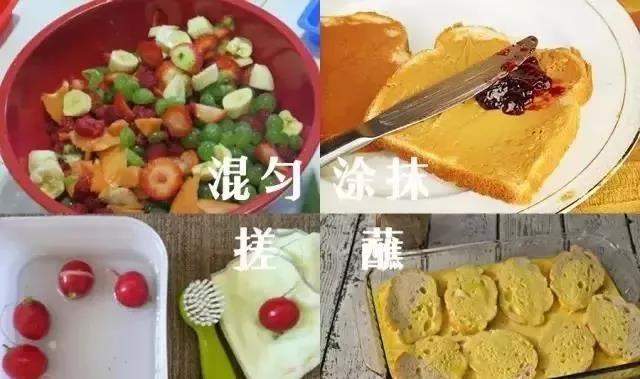
Step 1: Stir and mix
You can let your child stir fruits, vegetables and salad dressing (or oil and vinegar), or mix dumpling stuffing well.
Note that it is best to give your child a big and heavy bowl, which is not easy to overturn or spill. If you are worried that your child will not do well, you can also divide a small part into a small bowl and let him participate.
Step 2 Shake
Salad does not necessarily have to be stirred with a spoon. Use a cup to put vegetables and fruits, salad dressing or yogurt in it, and then tighten the lid to let the child shake it in his hand.
It is also fun to make a cup of shaken fruit and vegetable salad.
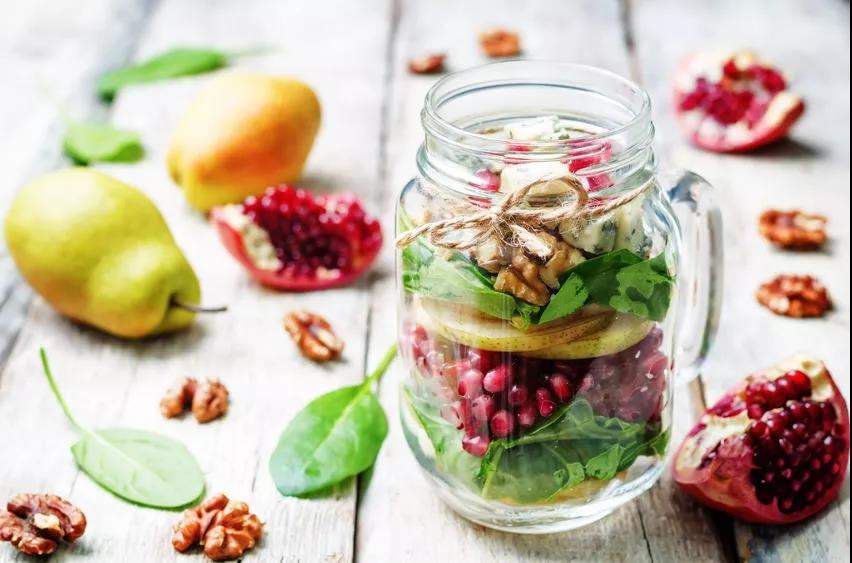
Step 3 Smear
Use a safe jam knife to smear jam or peanut butter, and make love breakfast or afternoon tea for your family with grandparents and grandparents on weekends!
Step 4 Rub
Give the child a small brush and let the child wash the dishes.
Don’t worry about whether the children brush cleanly. Children like to participate and enjoy the process of cooking with their families. It is the most important thing, which is very helpful for children to establish positive self-awareness.
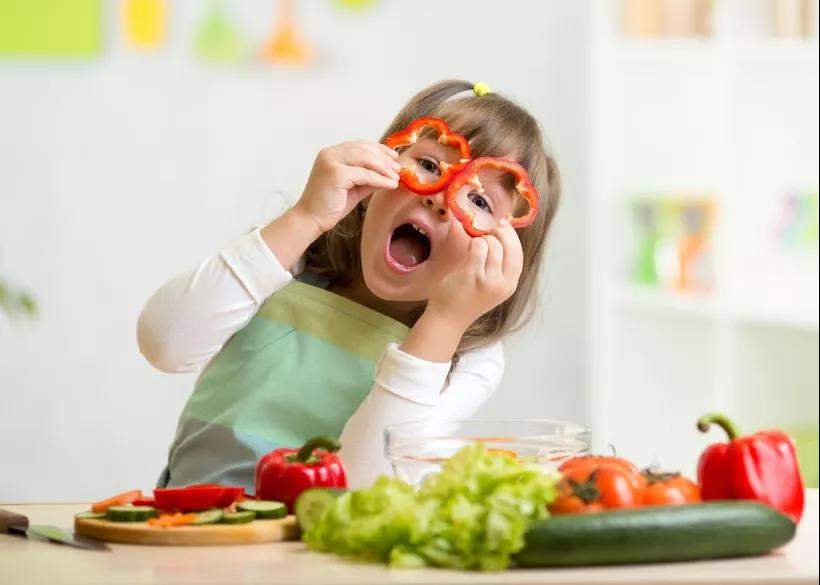
Step 5 Tear and break
Helping tear vegetable leaves and break beans are the favorite things for children aged 2-3!
In the process of children’s participation, positive affirmation of children’s seriousness and hard work will greatly improve children’s enthusiasm.
Praising children is easy for grandparents and grandparents.
Step 6 Dip in
Let the child dip steamed bread or toast slices with egg liquid to prepare for making golden steamed bread or golden toast. Or let the child dip beef in a bowl with soy sauce to marinate.
Only a few simple steps can greatly increase children’s sense of participation.
Step 7 Press, rub, and use simple tools
If you eat pasta, you may as well give your child a piece of kneaded dough and tools so that he can give full play to his creativity and make different [steamed bread], [dumplings] or noodles!
Prepare some simple moulds. When making biscuits and snacks, let the children use the moulds to press out the shapes together. Even 2-year-old children can make biscuits and snacks with rich shapes.
You can prepare a storage box in the kitchen, and prepare children’s aprons, wet wipes, children’s rolling pins, biscuit molds, etc. to collect small equipment for children.
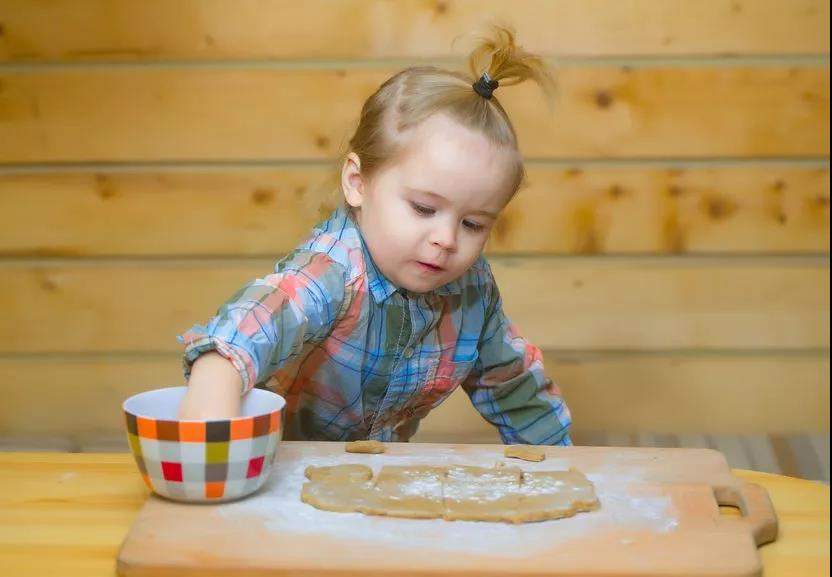
3 ~ 4 years old
At the age of 3, children begin to learn to use their fingers and wrists to do more things, so they can try the following activities:
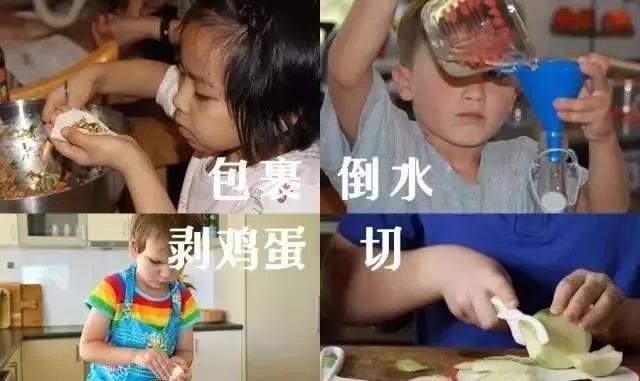
1. Packages
Making dumplings, wrapping tin foil outside potatoes, etc. As long as parents can tolerate the imperfection of the results and see the value of children’s participation, it is suggested to encourage children to participate.
Step 2 Pour water
Pour water, milk, juice, or use a cup to add water to the juicer.
It is possible that the child will inevitably sprinkle water on the outside of the cup at the beginning, but it is better not to replace the child when the child cannot do it well. You can assist the child to finish it first, and then slowly transition to let the child finish it by himself.
3. Roll out the dough and rub the ball.
Use your hand or rolling pin to roll the noodles flat, or knead the meat stuffing into meatballs.
If the family often makes balls, it is also possible to buy a ball tongs, which can be used by a 4-year-old baby.
Step 4 Use a measuring cup
The simplest step is to scoop rice when braising rice, so that the child can watch it and take him to participate slowly.
Use cups to weigh beans and millet, which can also allow children to participate.
Step 5 Peel
When peeling boiled quail eggs, eggs and corn, you can do it with your child or let your child be responsible. It can also cultivate children’s sense of responsibility by the way.
STEP 6 Cut soft food
Such as bananas, boiled carrots, dough and other foods, can be cut by children with children’s safety knives under the guidance of adults.
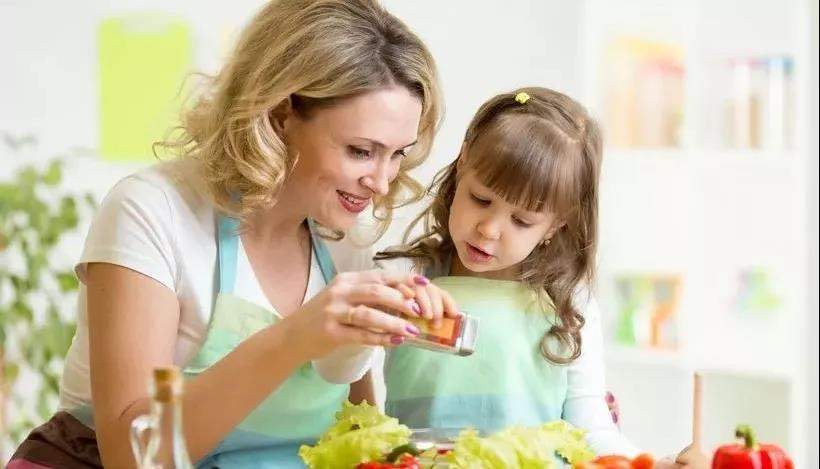
The purpose of education is never to make children learn well, but to make children like learning.
As long as you are willing, you can also provide an early education environment for your children at home, so that your children can learn while doing and feel the fun of learning.
This weekend, find a storage box, install children’s aprons, noodle playing tools (rolling pin, biscuit mould, children’s safety knife), mini chopping board, vegetable washing brush, and move!
